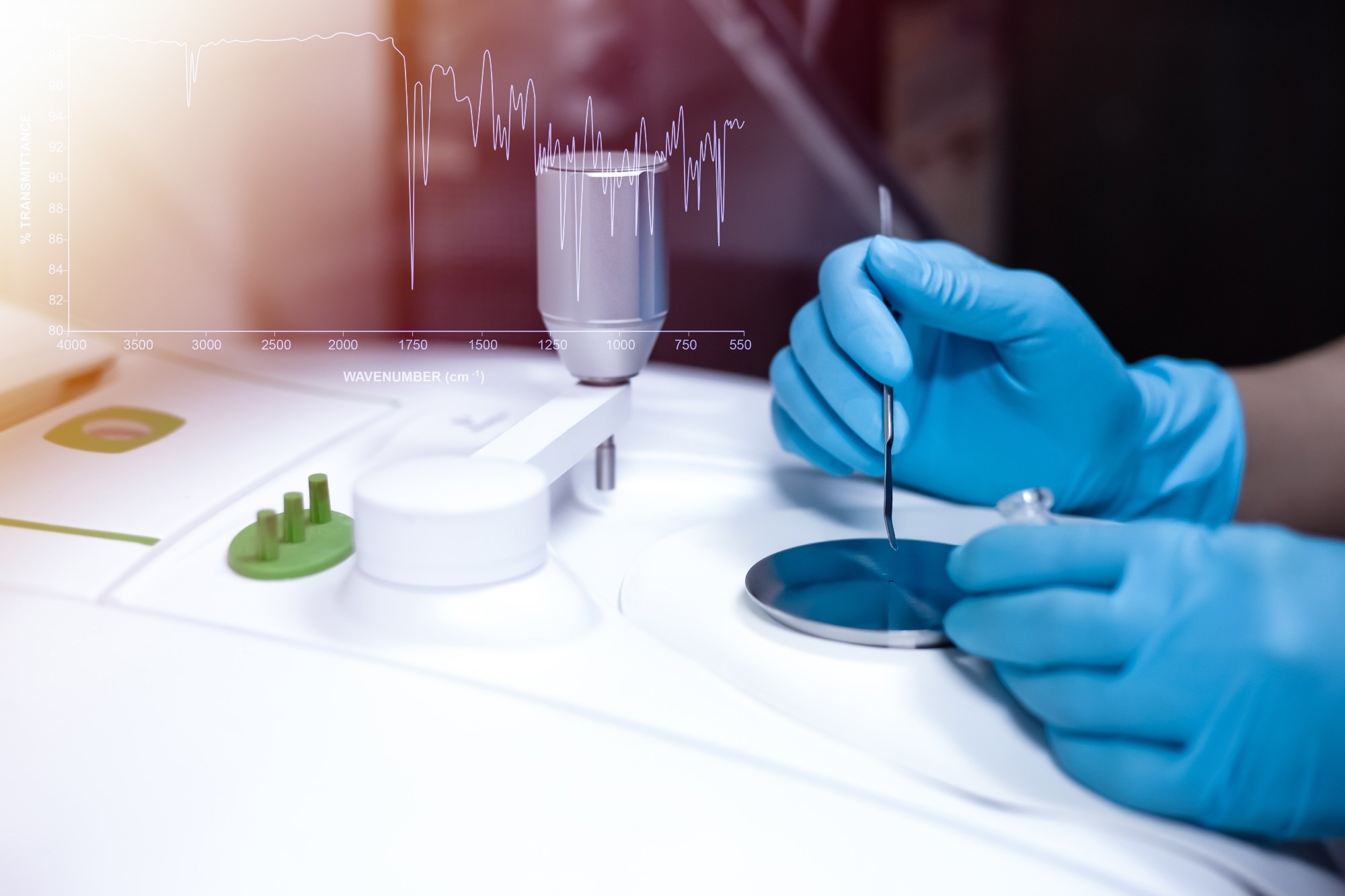In a recent article in Minerals, researchers introduced an innovative method for variable temperature infrared spectroscopy studies of minerals using a modified button sample holder. This holder incorporates a thermoelectric temperature controller for precise heating and cooling.
 Study: Temperature Perturbation Infrared Spectroscopy of Minerals. Image Credit: S. Singha/Shutterstock.com
Study: Temperature Perturbation Infrared Spectroscopy of Minerals. Image Credit: S. Singha/Shutterstock.com
Background
Minerals are natural substances with a definite chemical composition and a highly ordered atomic arrangement. They have applications in science, industry, and art.
Infrared spectroscopy uses infrared radiation to study a sample's molecular vibrations, providing information about chemical bonds, functional groups, and crystal structure.
However, applying infrared spectroscopy to minerals poses challenges. One challenge is the complexity of the spectra, which often contain overlapping and broad bands that are difficult to isolate and quantify. Another challenge is sample preparation, which may require grinding, diluting, or pressing mineral powders into thin films or pellets.
About the Research
In this paper, the authors developed a new method for variable temperature infrared spectroscopy studies of minerals. The method utilizes a modified button sample holder consisting of a stainless-steel base with a wire mesh that holds a thin layer of mineral powder.
This holder is mounted on a thermoelectric device, which can heat and cool the sample by applying an electric current.
The thermoelectric device is connected to a temperature controller, allowing for the programming of different temperature profiles, such as linear ramps, stair steps, or step-ups/downs. A thermocouple embedded in the button sample holder measures the sample temperature accurately and precisely.
The button sample holder is placed in a diffuse reflection infrared accessory, which collects the infrared radiation scattered by the sample. This accessory is attached to a Fourier transform infrared spectrometer, which measures the infrared spectra of the sample at various temperatures.
The spectra are processed using the Kubelka-Munk transformation, converting the reflectance spectra to a form proportional to the analyte concentration. The spectra are also corrected for baseline offsets and slopes and analyzed for band positions, shapes, and intensities.
This method enables fast and precise temperature control, with heating and cooling rates up to 2 °C/s and temperature stability within ±0.1 °C. It supports different temperature programs, revealing various aspects of the sample, such as structural changes, dehydration processes, and reversible and irreversible changes.
The method avoids spectral artifacts and sample preparation difficulties, as the mineral powders are used as received without dilution. Additionally, it increases the sensitivity of the technique, detecting small spectral changes due to temperature variations.
Research Findings
The new method was applied to quartz, silica gel, montmorillonite clay, gypsum, and coal. For quartz, a crystalline form of silicon dioxide (SiO₂), the method detected subtle changes in the Si-O-Si stretching vibration bands, indicating the distortion of the crystal unit cell with temperature variation. Additionally, a small, reversible water loss at 150°C was observed.
In the case of silica gel, a less crystalline form of SiO₂, significant changes in the oxygen-hydrogen (O-H) stretching vibration bands were revealed, indicating the loss of water and silicon-hydroxide (Si-OH) groups upon heating. The method also differentiated between reversible and irreversible water loss.
For montmorillonite clay, which has interlayer cations and water, the method demonstrated different behaviors in potassium and calcium-enriched clays. The potassium-enriched clay exhibited rapid and irreversible water loss compared to the calcium-enriched clay, with water loss associated with changes in the inorganic oxide and interlayer cation vibrations.
The method's application to gypsum, composed of calcium sulfate and water, highlighted its utility in profiling dehydration processes and identifying intermediate and final products.
Gypsum is dehydrated to anhydrous calcium sulfate without forming hemihydrate under low water vapor pressure, with dehydration accompanied by changes in sulfate and water vibrations. Upon cooling, the formation of hemihydrate was confirmed by characteristic O-H stretching and H-O-H bending vibration bands.
For coal, a complex mixture of organic and inorganic substances, the method compared spectra of lignite and bituminous coals. The outcomes showed that lignite had higher water content and lower organic content than bituminous coal.
Heating caused water loss and oxidation of hydroxyl groups to carbonyl groups, with different effects on the C-H stretching vibration bands, suggesting varying molecular structures and interactions.
Applications
The new method has potential implications in mineralogy and related disciplines. It can characterize various minerals' chemical and structural properties, monitor their changes under different conditions, and study their interactions with other substances, such as water, gases, or organic molecules.
Additionally, it can investigate the thermal behavior and stability of minerals, identify phase transitions and transformations, and explore their origins and evolution.
The method can be applied in various industries, including geology, mining, metallurgy, ceramics, cement, construction, agriculture, energy, environment, and art.
It can help optimize the extraction, processing, and utilization of mineral resources and improve the quality and performance of mineral-based products and materials.
Conclusion
In summary, the novel method was effective for variable temperature infrared spectroscopy studies of minerals.
It has several advantages over conventional methods, such as rapid and precise temperature control, different temperature programs, detection of reversible and irreversible sample changes, avoidance of spectral artifacts and sample preparation difficulties, and increased sensitivity to subtle changes.
Journal Reference
Disclaimer: The views expressed here are those of the author expressed in their private capacity and do not necessarily represent the views of AZoM.com Limited T/A AZoNetwork the owner and operator of this website. This disclaimer forms part of the Terms and conditions of use of this website.